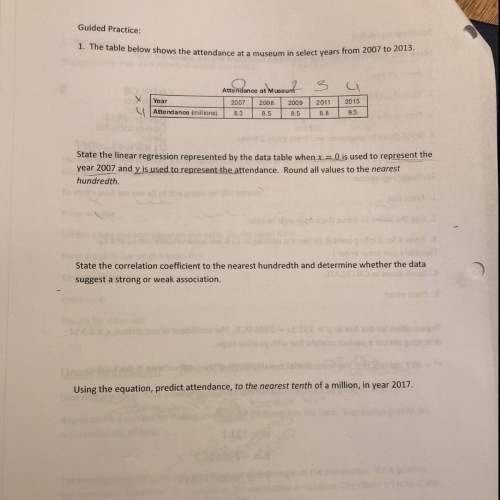
Mathematics, 21.04.2021 15:50 rurbanok12
In this problem we use the change of variables x=2s+t, y=s−3t to compute the integral ∫R(x+y)dA, where R is the parallelogram with vertices (x, y)=(0,0), (4,2), (7,−7), and (3,−9). First find the magnitude of the Jacobian, ∣∣∂(x, y)/∂(s, t)∣∣ then, ∫R(x+y)dA=?

Answers: 3


Another question on Mathematics

Mathematics, 21.06.2019 17:00
Aquantity with an initial value of 3900 decays exponentially at a rate of 35% every hour. what is the value of the quantity after 0.5 days, to the nearest hundredth?
Answers: 1

Mathematics, 21.06.2019 19:40
What is the slope of the line that contains the points (-2,1) and (0,-3)
Answers: 2

Mathematics, 21.06.2019 22:00
What is the solution to the division problem below x3+x2-11x+4/x+4
Answers: 2

Mathematics, 21.06.2019 22:30
Factor the polynomial by its greatest common monomial factor.
Answers: 1
You know the right answer?
In this problem we use the change of variables x=2s+t, y=s−3t to compute the integral ∫R(x+y)dA, whe...
Questions


Chemistry, 19.03.2021 20:50


Computers and Technology, 19.03.2021 20:50


Mathematics, 19.03.2021 20:50

History, 19.03.2021 20:50

Mathematics, 19.03.2021 20:50

Mathematics, 19.03.2021 20:50



English, 19.03.2021 20:50






Mathematics, 19.03.2021 20:50





